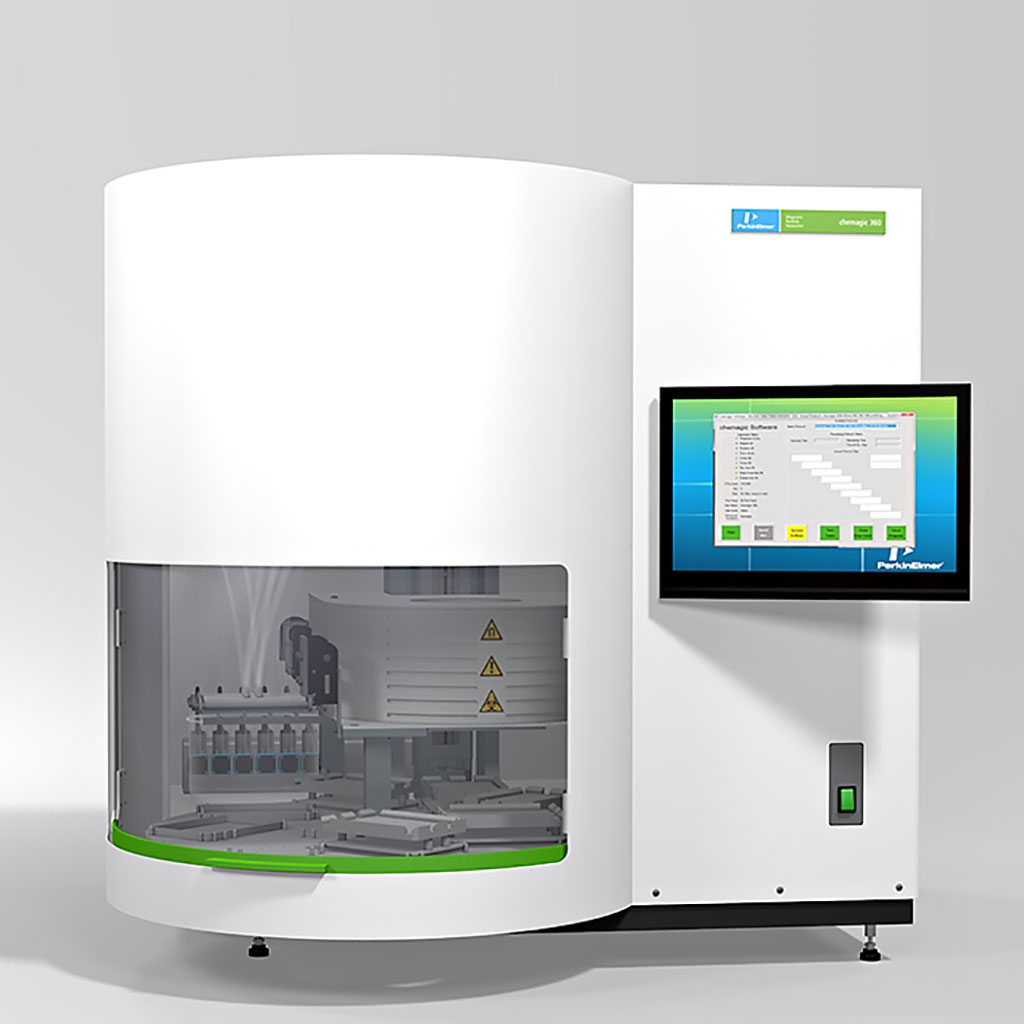Blood Group Locus Contributes to COVID-19 Severity Risk
By LabMedica International staff writers
Posted on 02 Jul 2020
There is considerable variation in disease behavior among patients infected with severe acute respiratory syndrome coronavirus 2 (SARS-CoV-2), the virus that causes coronavirus disease 2019 (COVID-19). Posted on 02 Jul 2020
Severe COVID-19 with respiratory failure requires early and prolonged support by mechanical ventilation. Clinical associations have also been reported for hypertension, diabetes, and other obesity-related and cardiovascular disease traits, but the relative role of clinical risk factors in determining the severity of COVID-19 has not yet been clarified.

Image: The Chemagic 360 extracts DNA and uses transiently magnetized rods to attract the beads after binding to the nucleic acids (Photo courtesy of PerkinElmer).
An international team of scientists led by the Kiel University (Kiel, Germany) conducted a genome-wide association study and meta-analysis encompassing thousands of COVID-19 patients treated at hospitals in Italy, Spain, Norway, and Germany. These included 1,980 individuals with PCR-confirmed SARS-CoV-2 infections who experienced respiratory failure as well as seemingly healthy control individuals from the same populations.
The scientists performed DNA extraction using a Chemagic 360 (PerkinElmer, Waltham, MA, USA) with the use of the low-volume kit CMG-1491 and the buffy-coat kit CMG-714 (Chemagen, Baesweiler, Germany), respectively. For genotyping, they used the Global Screening Array (GSA), version 2.0 (Illumina, San Diego, CA, USA), which contains 712,189 variants before quality control. The analyses used array-based genotyping profiles based on nearly 8.6 million single nucleotide polymorphisms (SNPs).
The investigators detected cross-replicating associations with rs11385942 at locus 3p21.31 and with rs657152 at locus 9q34.2, which were significant at the genomewide level. At locus 3p21.31, the association signal spanned six genes. The association signal at locus 9q34.2 coincided with the ABO blood group locus; in this cohort, a blood-group–specific analysis showed a higher risk in blood group A than in other blood groups (odds ratio, 1.45) and a protective effect in blood group O as compared with other blood groups.
The team explained that non-genetic studies that were reported as preprints have previously implicated the involvement of ABO blood groups in COVID-19 susceptibility, and ABO blood groups have also been implicated in susceptibility to SARS-CoV-1 infection. Their genetic data confirm that blood group O is associated with a risk of acquiring COVID-19 that was lower than that in non-O blood groups, whereas blood group A was associated with a higher risk than non-A blood groups.
The authors concluded that they had identified a 3p21.31 gene cluster as a genetic susceptibility locus in patients with COVID-19 with respiratory failure and confirmed a potential involvement of the ABO blood-group system. The study was published on June 17, 2020 in The New England Journal of Medicine.













